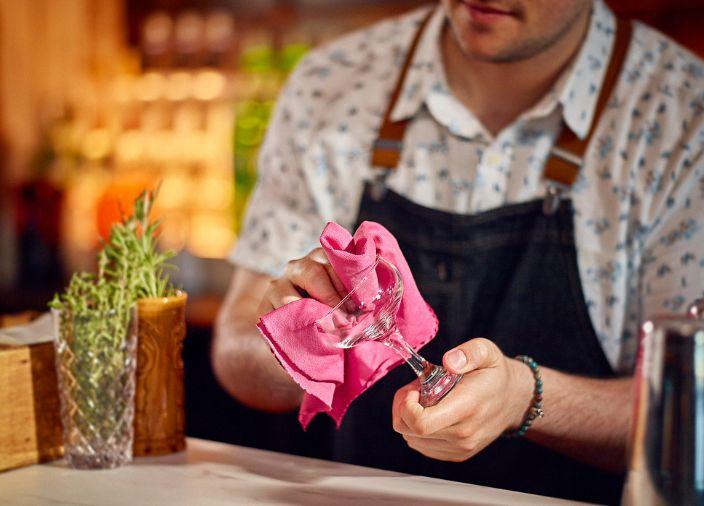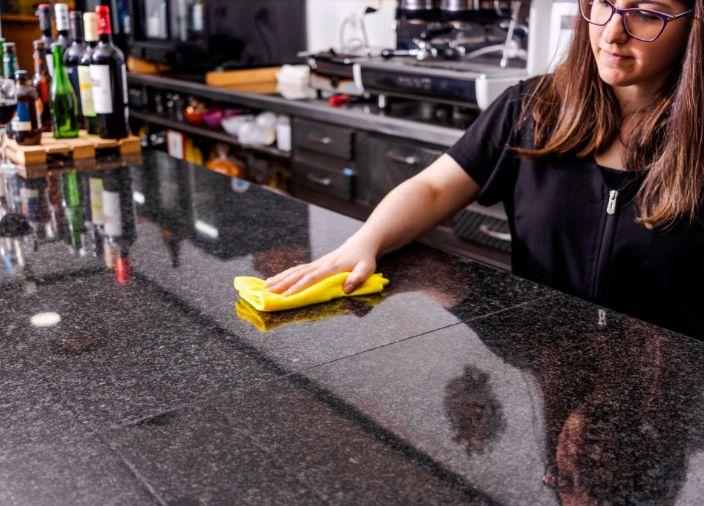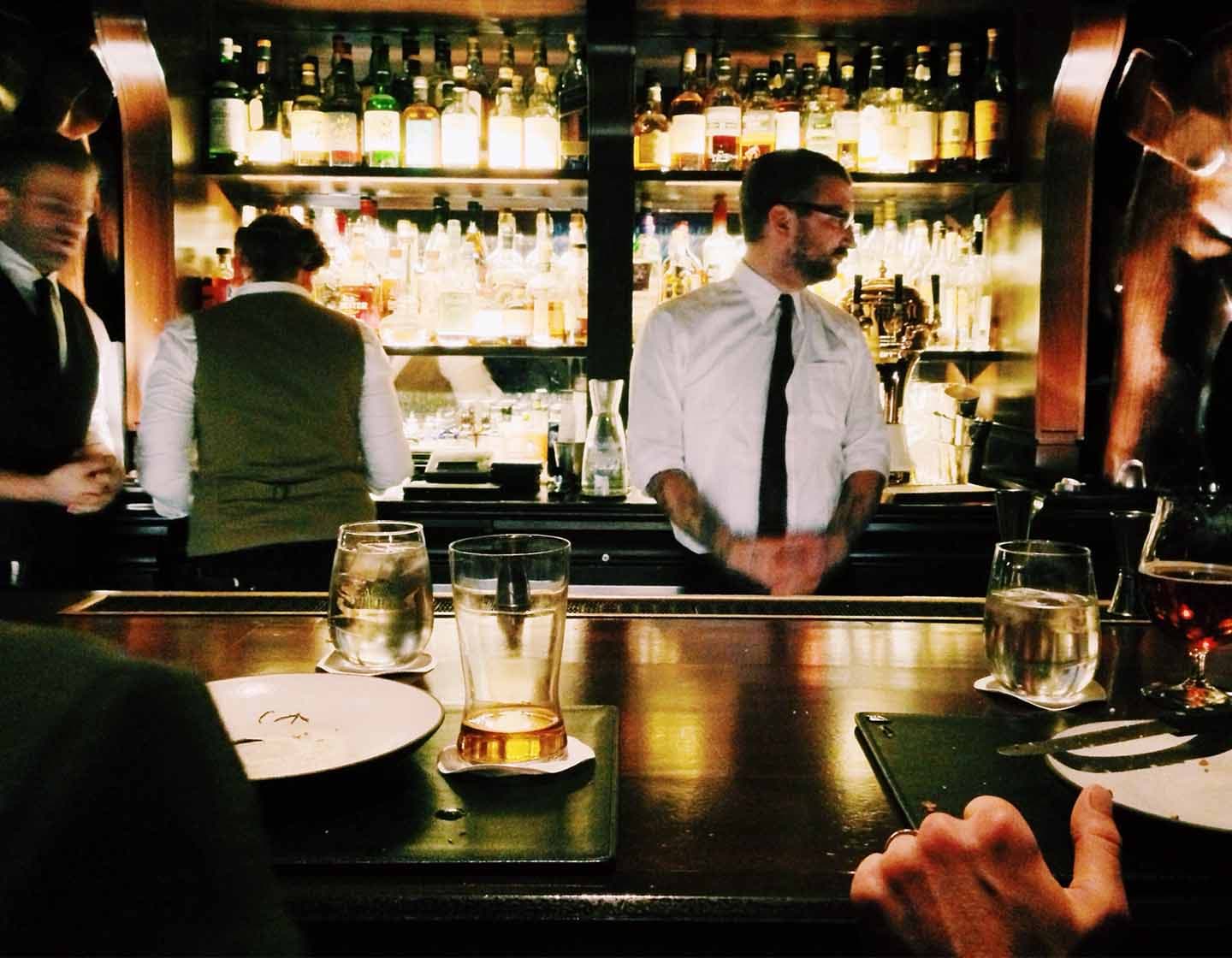BAR SKILLS CHECKLIST: OPEN AND CLOSING PROCEDURES
Opening and closing procedures will ensure a consistent, more efficient bar set up. These checklists can drive efficiency, giving your team more time to create incredible guest experiences.
Estimated reading time: 5 minutes
Proper preparation when opening a bar and attention to detail when closing it is absolutely vital. Executing this practice means that bar professionals coming on shift can focus their time on what matters – delivering a great experience to their guests.
Whilst all bars will differ in the specifics of their opening and closing procedures, what they all have in common is that they’ll operate more efficiently if the procedures they have in place are carried out correctly.
By ensuring a close or open is done perfectly creates a “pay it forward” culture; because you’ve created a great environment for the next staff member in, they are more likely to do the same for the person after them and so on.
Opening Procedures Checklist
All bars should have a comprehensive list of tasks that are required to be completed before they’re able to open to guests. If your bar doesn’t have an opening checklist and you’re relying on staff to carry out all the necessary tasks from memory, you should create one; it’ll save time and money and make your team more efficient. You can use our opening checklist example as a base to start from.
Whilst the individual items on an opening checklist will vary from bar to bar, there will likely be some tasks that feature on most bars’ checklist. For example:
- Ventilating the venue
- Turning on the air conditioning (or heating)
- Carrying out front of house cleaning tasks (or checking the tasks have been completed to the required standard by the cleaners).
- Ensuring spirits, bottled beers and mixers and ingredients are stocked to the required level.
- Ensuring the garnishes required for the coming shift are prepared.
- Ensuring menus are placed on the bar and on tables.
There are many more items that will likely feature, and the list should be tailored to the venue’s set-up and operations. Ensuring that your opening checklist includes all the necessary tasks and ensuring that each task is completed and checked off the list daily will ensure that the subsequent shift runs smoothly and minimise the unnecessary delays that impact the quality of guest service.
A carefully constructed opening checklist means that nothing is left to chance, and the potential for human error is minimised.

Setting up Workstations
When compiling your opening checklist, you should consider the 'two step rule', a rule stating all items and ingredients needed to make the most popular drinks should be located within easy reach (no more than two steps) of your workstation. This should inform the layout of your bar station, the speed rail and the back bar, and be a key part of your opening checklist.
Here are some things to consider when setting up your workstation:
- Glassware – have all the popular types of glasses within easy reach.
- Ice – the ice well should be full, or the ice bucket should be on the bar or next to your glassware.
- Spirits – fully stocked and ready to go at all times.
- Mixers – a full selection, ready in the chiller.
- Garnish – fresh, prepared and easy to access.
- Draught products – check all beer lines and ensure they’re pouring correctly.
- Tills (Cash registers) – check they’re in full working order and equipped with change and spare till rolls.
- Credit card machines – fully charged, connected and ready to take payments.
Effective opening checklists mean that fewer staff will be needed to setup the bar before service as each member of staff will work more efficiently. This will enable you to schedule more staff on shift when it matters, when they’ll be generating revenue for the business.
Remember: Never leave a bar in a state you wouldn’t be happy to find it in. Nobody wants to see the message in the group chat “who closed last night as the bar is a disgrace".

Maintenance Matters
When a bar is clean, well maintained, and easy to navigate, you’ll be much more efficient and attentive when serving customers. What’s more, by following simple rules behind the bar, not only will you reduce the time spent cleaning and closing up at the end of your shift, but you’ll also limit the chaos and feeling of being overwhelmed during your shift.
Cleaning as you go should be a non-negotiable behaviour for all members of your bar team. Cleaning up any spillages as and when they occur so the bar is always looking its best is a minimum standard that all bars and bar professionals should adhere to.
On your bar, every item should have its place and once used, should be returned to its designated place. If you always do this then soon, you’ll know exactly where everything is without needing to look and you’ll not only function with increased efficiency, but you’ll appear much more professional and organised.
Closing procedures
Your closing procedures are just as important as your opening procedures and should have their own dedicated checklist. The cleanliness of your venue has a huge impact on your business and so it’s important to be consistent and always stay on top of it.
Effective closing procedures with associated checklists ensure that your environment and your equipment are cleaned thoroughly every night, easing the risks associated with dirty environments like pest infestations or the build-up of harmful bacteria. They’ll also make your opening procedures easier as you won’t be cleaning up from the night before.
While every venue is different, a sample closing checklist may include:
- Wash and dry the bar mats, utensils and any other equipment used.
- Wash and put away glasses, checking for chips or cracks as you go.
- Restock any products that are low, this includes spirits, and everything stored in the fridge.
- Thoroughly wash down the bar areas. And don’t forget the floor!
- Empty the bins and replace the bags.
- Dispose of any garnishes that are past their best or put them to one side for repurposing. Otherwise, store these away for the following day.
- Ensure that any perishable products are accurately labelled with their opening date and discard date and that all health and safety protocols are being followed to the letter.
Remember:
Never leave a bar in a state you wouldn’t be happy to find it in. Nobody wants to see the message in the group chat “who closed last night as the bar is a disgrace".
If You Fail to Prepare, Prepare to Fail
Opening and closing procedures are there to help you, not hinder you. A clear checklist (one that any newcomer can understand) will ensure a consistent bar set up that allows servers to get much faster and more efficiently. These checklists not only allow you to spend more time creating incredible guest experiences, but also allow management teams to spot problem areas quickly and action any necessary improvements.
There are countless benefits to being prepared:
- Top customer service – a clean bar is visually more attractive to customers and makes them more likely to return in the future.
- Better efficiency – a fully stocked bar will ensure a quick and consistent speed of service and reduce the need for staff leaving the bar to restock.
- Recommendation opportunities – a fully stocked bar allows your customers to easily see the full range of products on offer, this may encourage them to try something new.
You can use our Diageo Bar Academy closing procedures checklist as a template to create your own closing procedures checklist. Use this every shift to ensure your bar is setup efficiently and fully stocked before guests enter the bar.
Key Takeaways
- Preparation is vital: Having the right procedures prepared is a vital to efficient bar operations. Set time aside to do this exercise with your team.
- Use checklists for team alignment: Checklists are crucial to ensure efficient and smooth shifts by organising clearly defined tasks.
- Workstation efficiency: Take the time to organise workstations as this will optimise your overall bar efficiency.
- Cleanliness: Maintaining cleanliness enhances service efficiency and reduces chaos during shifts.
- Clear opening and closing procedures: One is as important as the other. Dedicated closing checklists maintain cleanliness, easing subsequent opening procedures.
